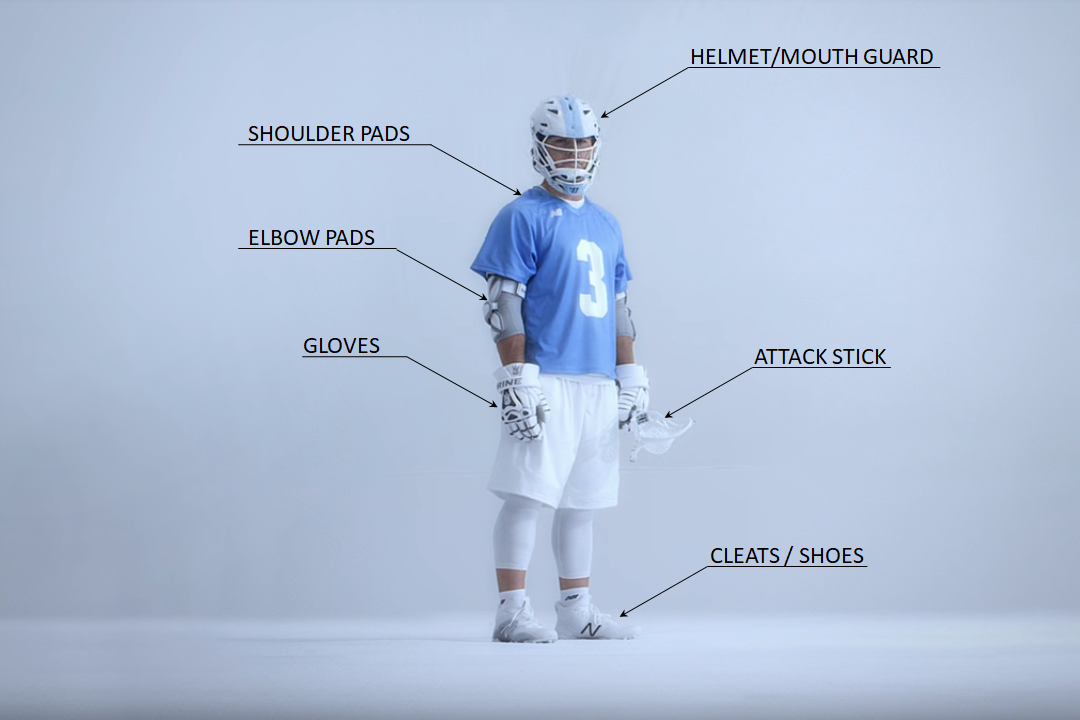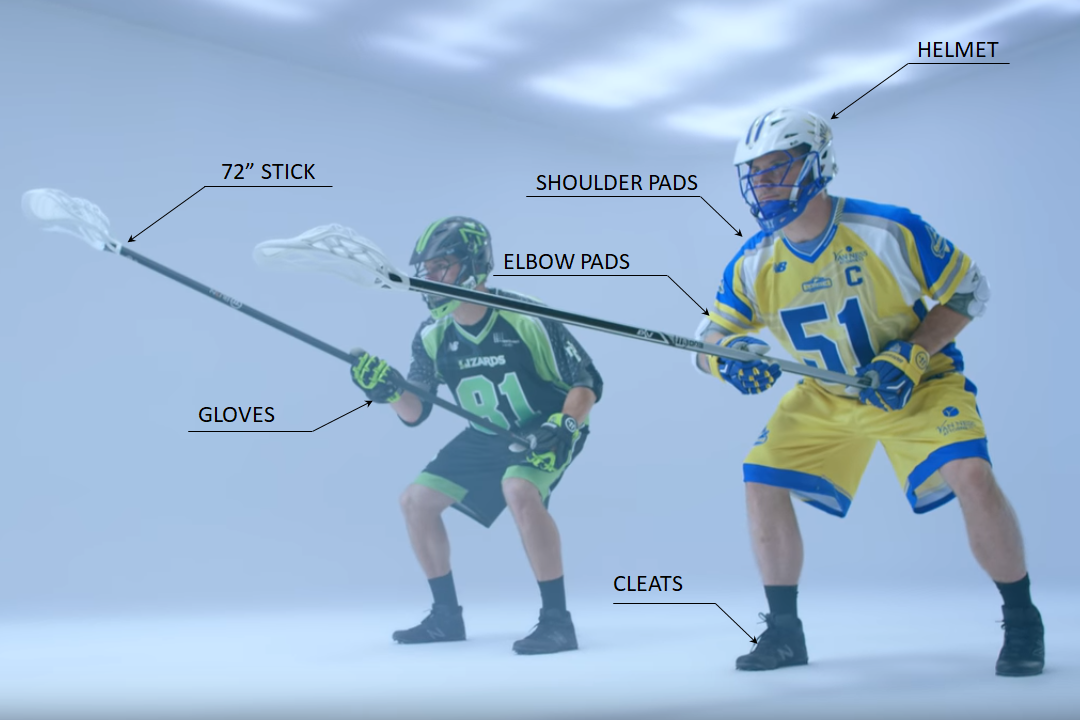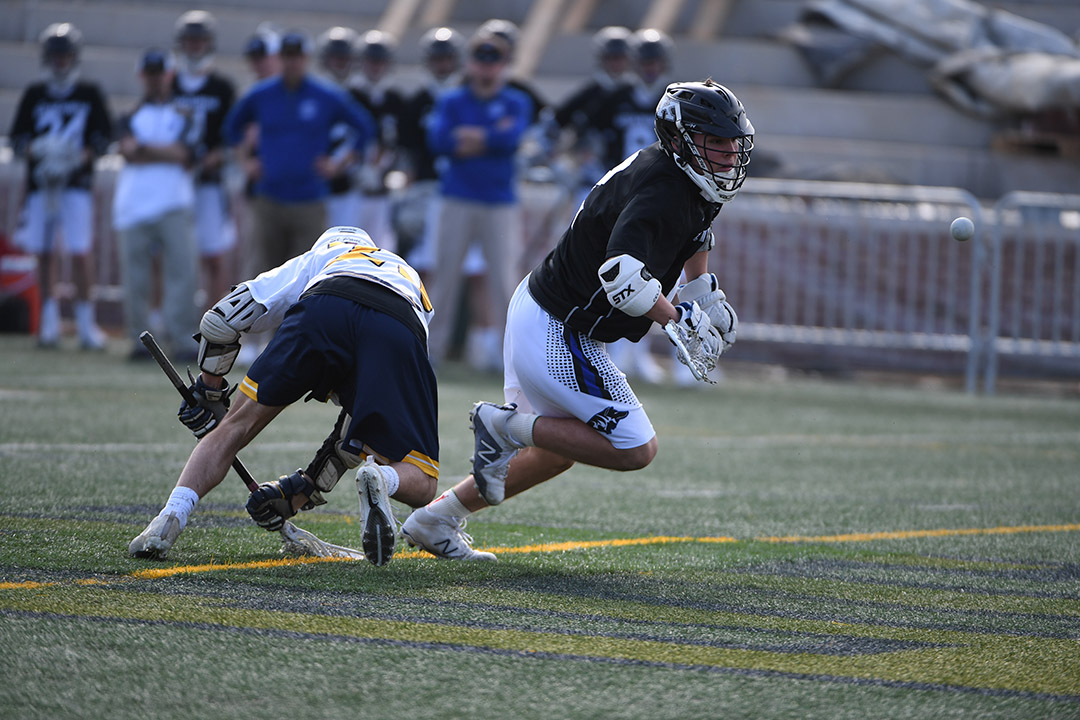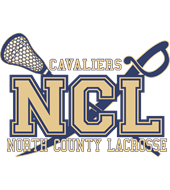What you Should Know About Lacrosse
THE EQUIPMENT REQUIRED
Armor Up.
The equipment requirements for Lacrosse are more then soccer but far less expensive then football. Furthermore the related injuries are far less then both Football and Soccer.


Define Your Spirit Animal
Just as with native american tribes, the field positions in lacrosse embody the essence of those creatures the players identify with.
Defenseman
(Long Poles) are the enforcers. They are the players who are capable of dictating to the opponents attack where they can go, and where they will be punished for going. They need to be very physical, but still extremely agile. They utilize much longer sticks up to nearly 72″ long which allow them to disrupt the opponents attack. Great defensemen need to have exceptional footwork and communications. Position on the field is the key to being a great defender, cutting off the opponents angles to the goal is critical. The longpole will generally abuse the enemy with a barrage of checks from the longer pole and work themselves between the attacker and the goal, all the while working to dislodge or intercept the ball. The defenders job is often also to “Clear” the ball down the field after a turnover out of the defensive zone. One of the most exciting plays is when a longpole runs the field with a middy back to allow the longpole on offense and shoot or pass to a fellow attacking player.


Attackmen
Fast and Quick swift like a bird of prey, Attackmen typically spend their entire lives in the opponents end of the field. They cannot cross the midfield line during play unless they are replaced by a middie, to balance the field there are always at least 3 players in the offensive end. Attackmen need to be extremely agile with excellent stick skills. They keep a higher field awareness to see plays develop and swoop in to attack or feed by seeing the holes in the defense. The real test of a great attackmen is not just how adept they are at scoring goals, but how well do they pass (feed) the open man to set up the goal. Great attackmen typically have large numbers of assists as well as goals, making them a triple threat player.
Midfielder

Lacrosse “Lax” Basic
Lacrosse basics. For those not familiar with lacrosse, the game can best be described as a cross between hockey, soccer and football. The object of the game is to get the lacrosse ball in the opposing team’s net. The ball cannot be thrown using hands. The most effective way for advancing and shooting a lacrosse ball is catching it and then moving or throwing it with a lacrosse stick. A lacrosse game is divided into four quarters, ranging from eight to 15 minutes depending on age level. The modern lacrosse field at the college level is 110 yards long and 60 yards wide. A lacrosse goal is 6 feet high and 6 feet wide and is positioned 15 feet from the endline allowing 360 play around the goal.
Field Dimensions differ between Men’s and Female and Youth lacrosse but a typical field diagram is shown for reference to boys high school lacrosse.

Lacrosse Rules
Lacrosse Rules. The National Federation of State High School Associations (NFHS) authors rules for high school boys’ lacrosse. For 2017, US Lacrosse has produced a stand-alone youth rule book for Boys and Girls U18 as well as age appropriate for ages 14U and below. NSYL (North Sound Youth Lacrosse) league does make some acceptations to these rules that can be found at http://nsyouthlax.com/Page.asp?n=141240&org=NSYOUTHLAX.COM
Basic Rules Interpretation Videos are shown below for the past season and it is highly encouraged for each player, parent, and coach to watch and understand the fun, fair, sage way to play lacrosse.
THE LINGO:
Assist – The pass to the shooter before the goal is made
Box – The penalty box, can also mean coaches’ box. Box lacrosse also refers to the indoor game. Also the designated substitution area
Cage – The goal
Check – Any contact. There are several types of checks. The body check is using the body to defend against an opposing player (must be within 15′ of loose ball and above the waist from the front or side). A stick check is hitting your stick against another players stick to dislodge the ball from an opposing players pocket. Poke check is when defenders pokes his stick at the hands of another player to dislodge the ball front pocket.
Cradling – Twisting the shaft to keep the ball in the pocket
Crease – The area surrounding the goal, the 9′ (men’s) or 8.5′ (women’s) semi circle. Offensive players can’t enter the crease.
Cutting – Moving rapidly in different directions on the field
Ground Balls – Loose balls that are prime for being scooped up
Pocket – Head of the stick
Clear – When a goalie or defenseman attempt to move the ball from their side of the field to their opponents
The X or X – The spot on the field right behind the goal/crease
Goal Line Extended or GLE – Invisible line that stretches across the field in line with both goal posts
For Parents and Players
The best way to learn is to explore. Join one of our Pre-Season clinics and then join us for our regular season. Tryouts for Varsity are the first two weeks of the season. No tryouts required for Youth, JV, and Off Season play.

Rec
Our Recreational lacrosse program provide a relatively inexpensive way for your children to participate in the sport, both at beginning and intermediate levels. Season is generally concentrated in the spring with some summer/fall clinic oppertunities.

Club

School
For Athletes – Of All Sports
The most often and highly recruited players at both NCAA Collegiate and Professional level are well rounded multi-sport athletes. Lacrosse as a dynamic sport forces higher level of athletic development at all levels and is praised in all other sports because of the elements that are directly applicable.
